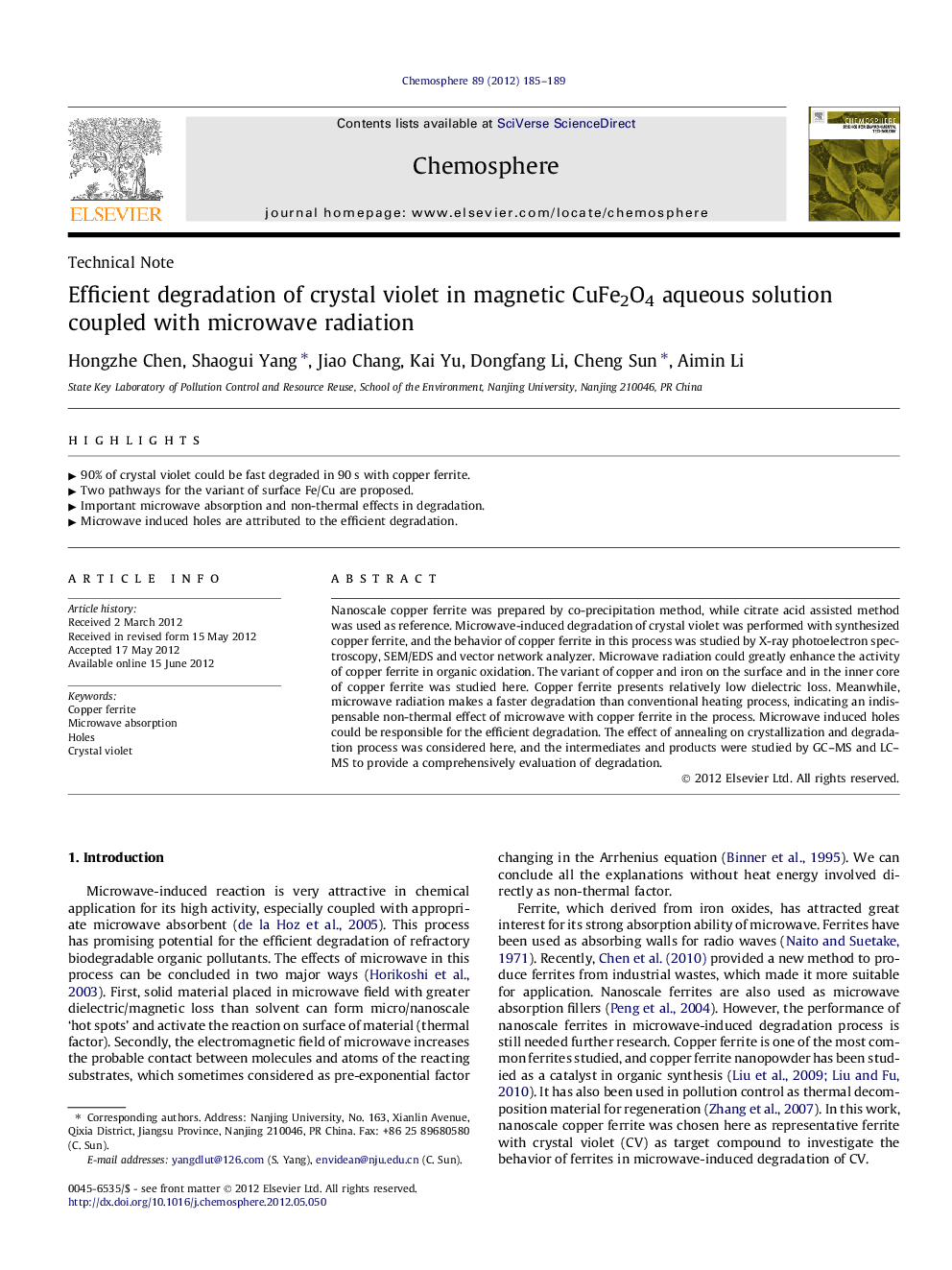| Article ID | Journal | Published Year | Pages | File Type |
|---|---|---|---|---|
| 4409975 | Chemosphere | 2012 | 5 Pages |
Nanoscale copper ferrite was prepared by co-precipitation method, while citrate acid assisted method was used as reference. Microwave-induced degradation of crystal violet was performed with synthesized copper ferrite, and the behavior of copper ferrite in this process was studied by X-ray photoelectron spectroscopy, SEM/EDS and vector network analyzer. Microwave radiation could greatly enhance the activity of copper ferrite in organic oxidation. The variant of copper and iron on the surface and in the inner core of copper ferrite was studied here. Copper ferrite presents relatively low dielectric loss. Meanwhile, microwave radiation makes a faster degradation than conventional heating process, indicating an indispensable non-thermal effect of microwave with copper ferrite in the process. Microwave induced holes could be responsible for the efficient degradation. The effect of annealing on crystallization and degradation process was considered here, and the intermediates and products were studied by GC–MS and LC–MS to provide a comprehensively evaluation of degradation.
► 90% of crystal violet could be fast degraded in 90 s with copper ferrite. ► Two pathways for the variant of surface Fe/Cu are proposed. ► Important microwave absorption and non-thermal effects in degradation. ► Microwave induced holes are attributed to the efficient degradation.
